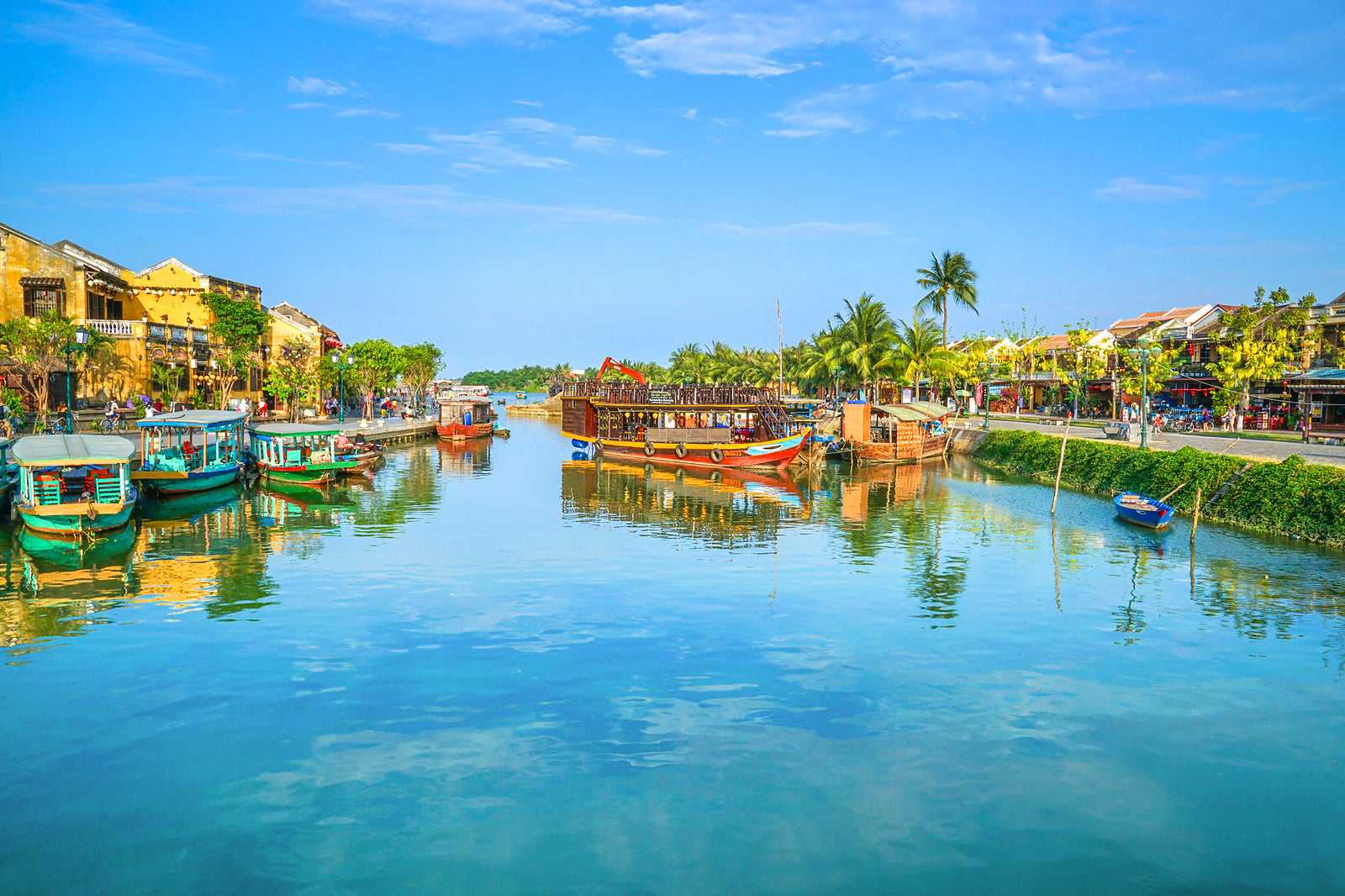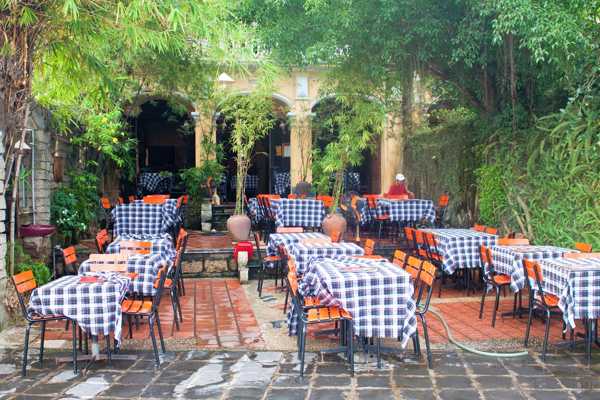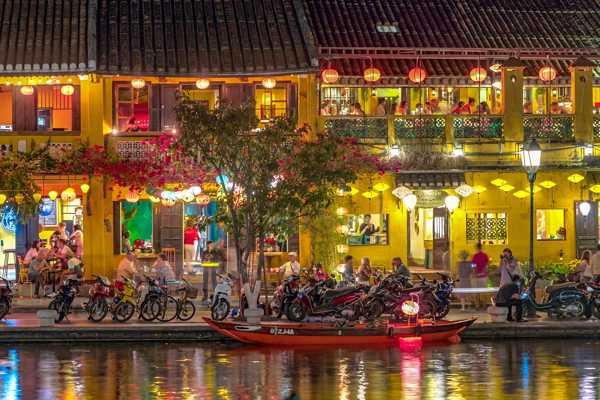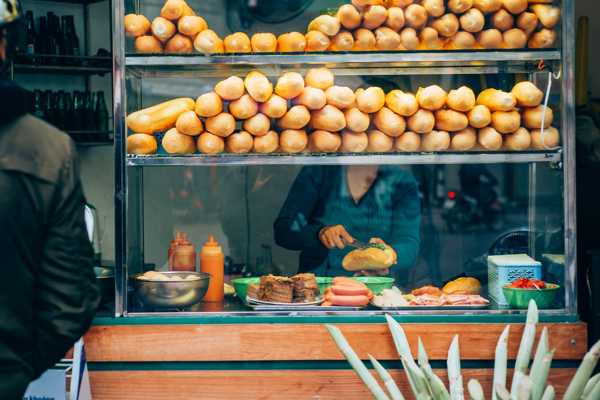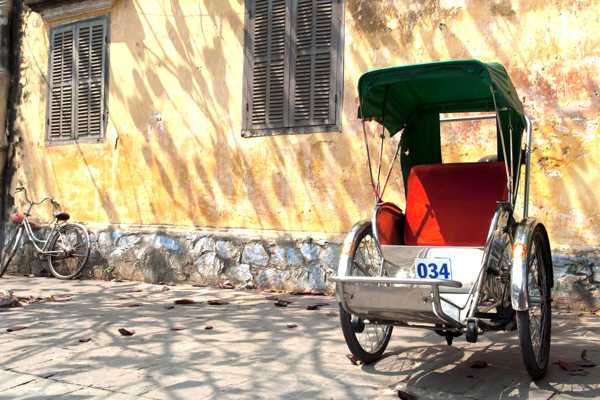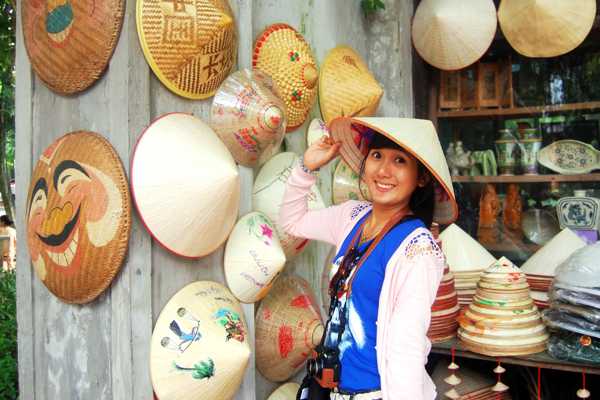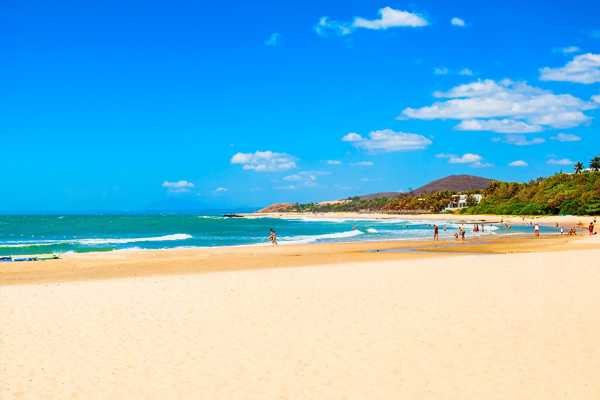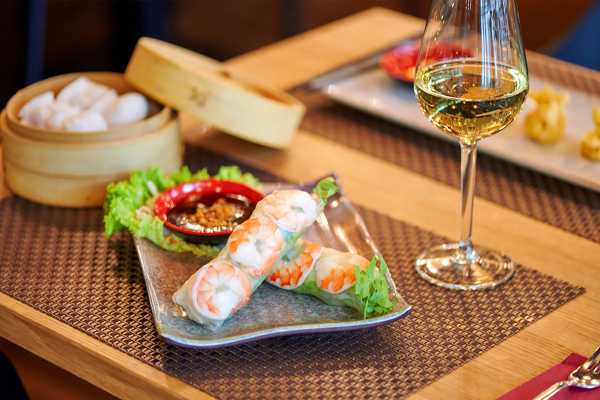The best things to do in Hoi An are mostly set within the popular areas of Riverside and Ancient Town. You can easily explore these areas on foot or cyclo (3-wheel bicycle taxi). Between the 15th and 19th centuries, Hoi An was a prominent Vietnamese trading port for silk, porcelain, pepper, cinnamon, and medicinal plants as it’s set near the Thu Bon River. As a result, the city displays a mix of Vietnamese, Japanese, Chinese, and French architectural features.
Declared a UNESCO World Heritage site in 1999, Hoi An is teeming with beautifully restored houses, shops, and temples, offering sightseeing opportunities you won’t find in other cities in Vietnam. Ranging from centuries-old Buddhist pagodas and temples to pristine beaches and quaint museums, discover Hoi An’s most popular attractions below.
What are the best things to do in Hoi An?
- 1
Hoi An Ancient Town

- Mad
- Historie
- Natteliv
- Billeder
Hoi An Ancient Town offers a breathtaking mix of ornate Chinese temples, a Japanese-designed bridge, wooden shophouses, French colonial houses, and old canals. The town area was listed as a UNESCO World Heritage site in 1999 and most of the old shops here have been carefully converted to modern businesses aimed at tourists. These include countless tailors, souvenir shops, art galleries, restaurants, and cafes.
An entrance fee is required, with each ticket valid for 10 days and covers entrance to Hoi An Ancient Town, 6 points of interest, and street entertainment (folk dancing, singing, and traditional games).
Adresse: Hoi An, Quang Nam, Vietnam
Kort - 2
Hoi An Riverside
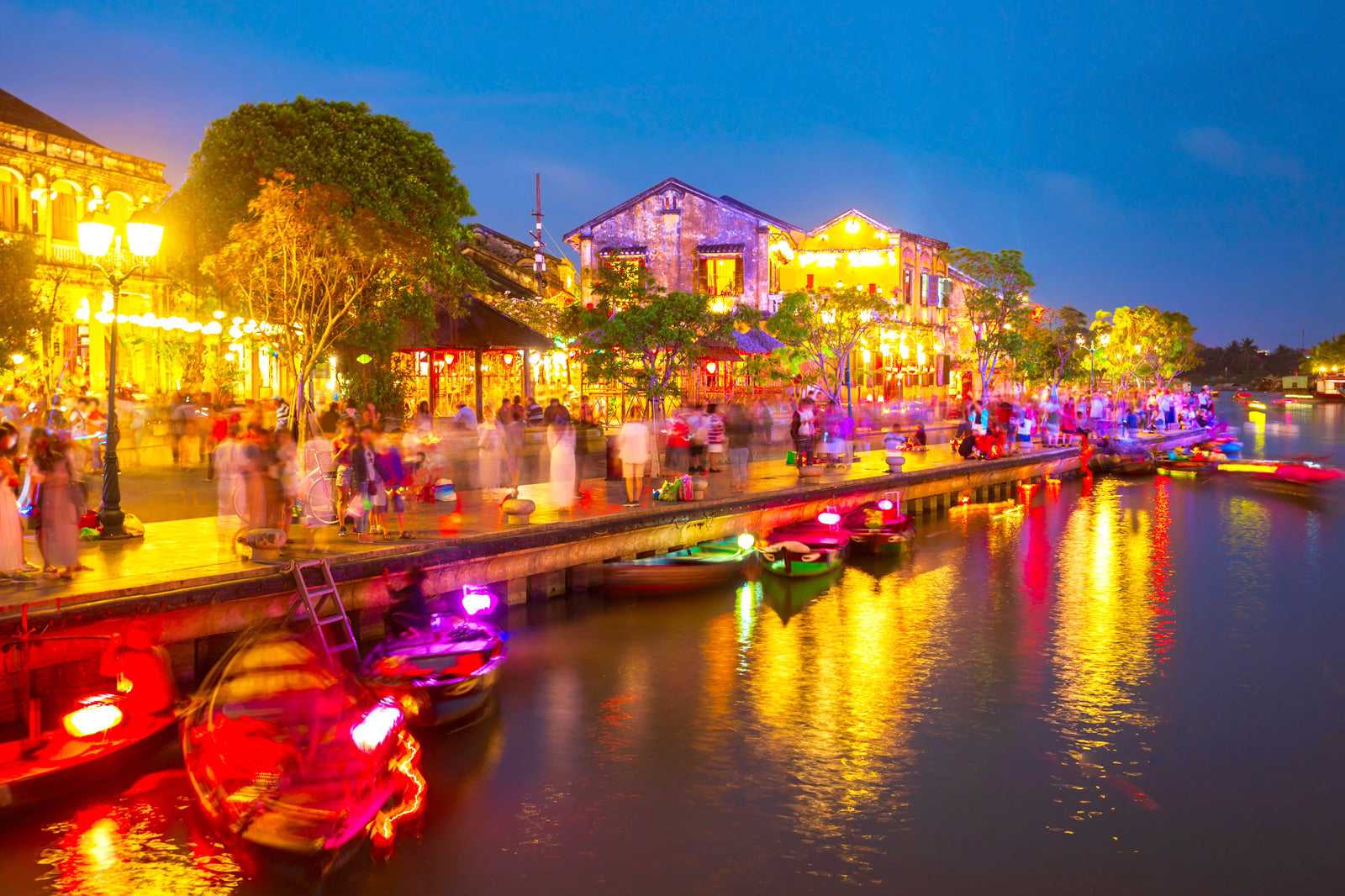
- Mad
- Natteliv
- Shopping
Hoi An Riverside was a prominent stop for foreign traders between the 16th and 18th centuries due to its location on the banks of Thu Bon River. The waterfront area is best known for its lively bars, bistros, and restaurants, where you can enjoy fresh seafood, beers, cocktails, coffee, and cakes, as well as local and international fare.
There are plenty of local boats to charter at the docks, which you can hire for a day of fishing or cruising along the tranquil river. During annual festivities, hundreds of colourful handcrafted lanterns illuminate the wooden bridges, verandas, and windows of shophouses.
Adresse: Hoi An, Quang Nam, Vietnam
Kort - 3
Japanese Covered Bridge
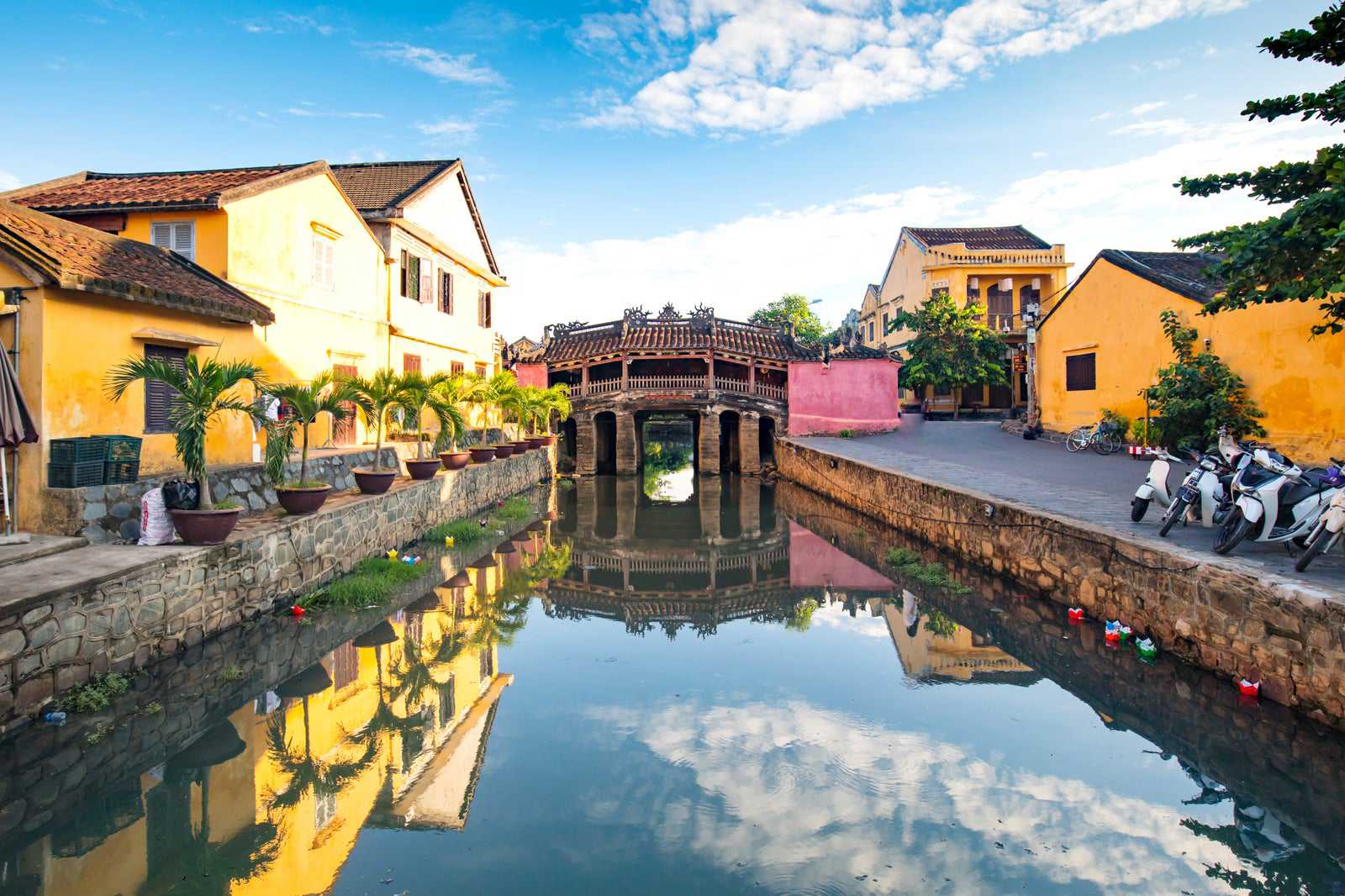
- Historie
- Billeder
The Japanese Covered Bridge (Chùa Cầu), which dates back to the 18th century, is one of the most prominent attractions in Hoi An Ancient Town. Spanning 18 metres in length, locals believe that it was built by the Japanese then living in Hoi An, as a way to reach the Chinese quarter across the water.
In 1719, Lord Nguyen Phuc Chu officially opened the bridge by carving 3 Chinese symbols above the entrance. The Japanese Covered Bridge also features intricate sculptures of 2 dogs and 2 monkeys to represent the birth years of prominent Japanese Emperors.
Adresse: 186 Tran Phu, Minh An Ward, Hoi An, Quang Nam, Vietnam
Kort - 4
Cua Dai Beach
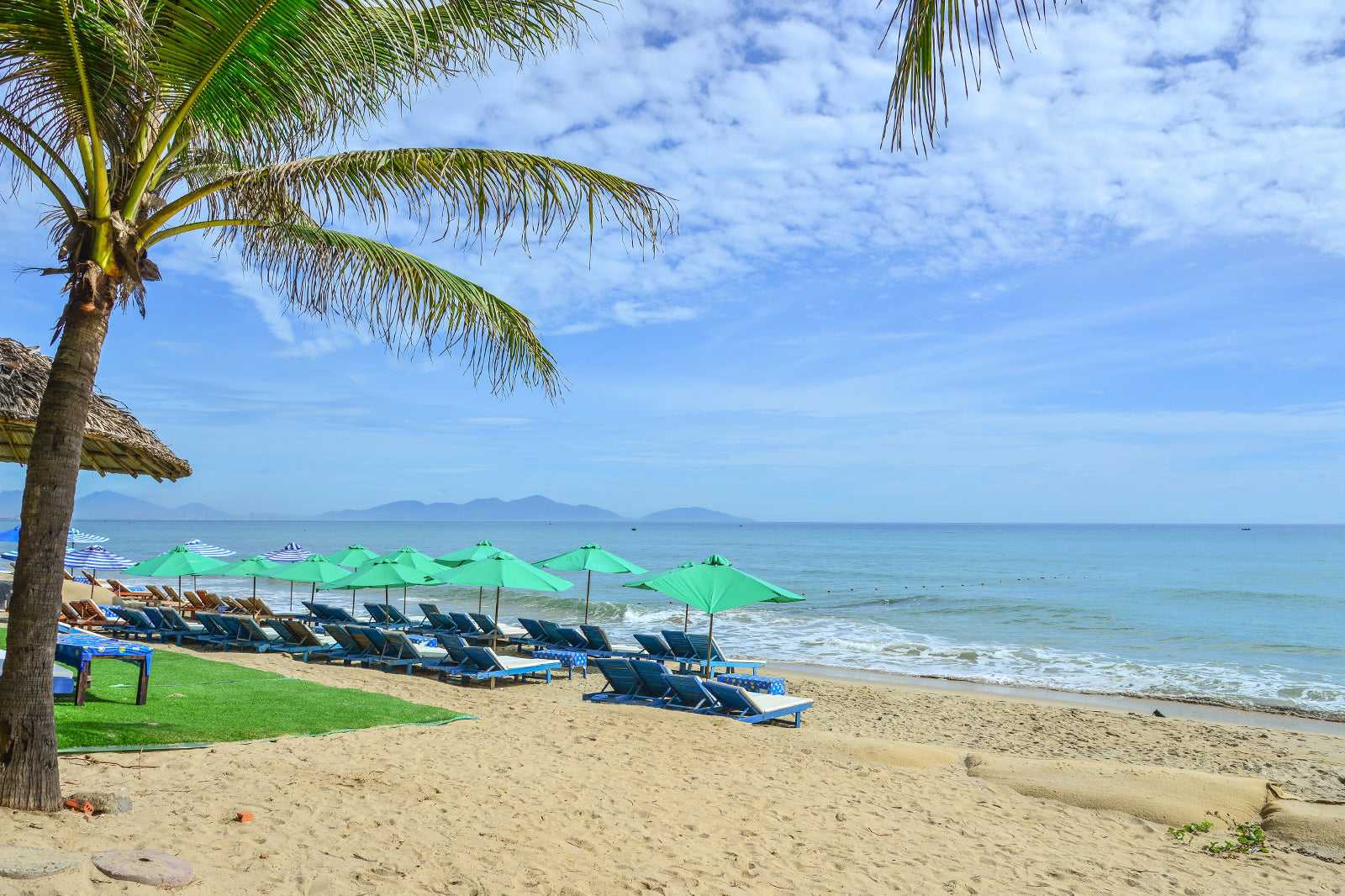
- Par
- Familier
- Billeder
Cua Dai Beach offers a relaxing seaside escape from the ancient streets of Hoi An. Boasting a 3-km stretch of white sand and gentle waves, the beach is relatively quiet most of the time, apart from weekends and public holidays.
After a day of swimming and snorkelling, it's worth staying for dinner at the numerous seafood restaurants located around the coast. Easily accessible via taxi or xe om (motorbike taxi), Cua Dai Beach is a 15-minute drive from Hoi An Ancient Town.
Adresse: Cam An, Hoi An, Quang Nam Province, Vietnam
Kort - 5
Van Duc Pagoda
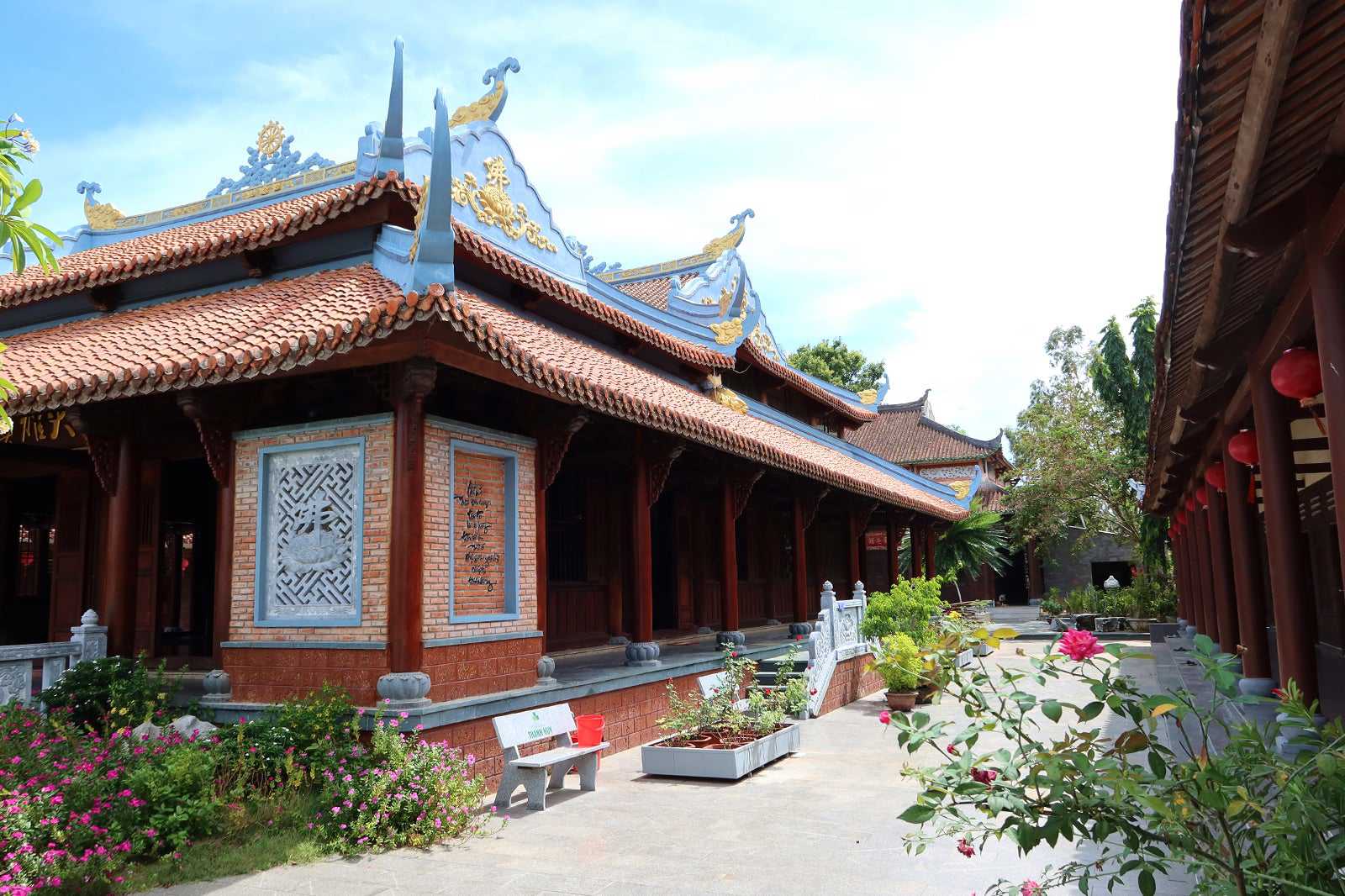
- Historie
- Billeder
Van Duc Pagoda dates back to the late 17th century and is where locals honour Buddhist deities such as Amitabha Buddha, Dia Tang Bodhisattva, and Avalokitesvara Bodhisattva. Hailed as one of Hoi An’s oldest Buddhist temples, the yellow-hued establishment features 3 worship halls, intricate animal sculptures, paintings of deities, potted plants, and plenty of trees offering ample shade.
Its peaceful surroundings draw numerous visitors looking to pay their respects, get fortunes told, or simply marvel at the well-preserved architecture. On full moons and auspicious celebrations, you can also see local monks releasing paper lanterns into the river while chanting prayers.
Adresse: Cam Ha, Hoi An, Quang Nam, Vietnam
Kort - 6
Hoi An Museum
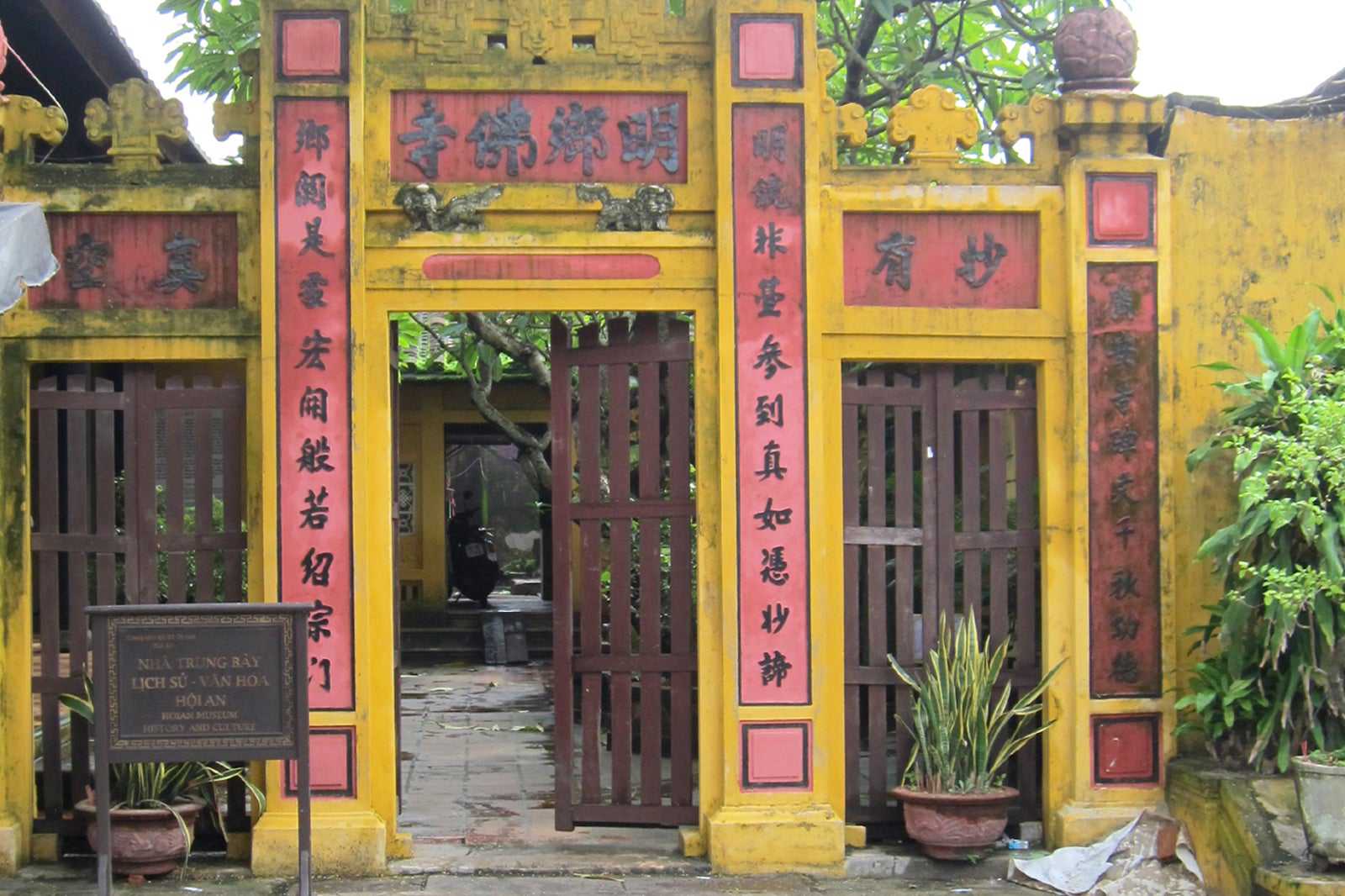
- Historie
- Billeder
Hoi An Museum showcases relics that span 2,000 years of Hoi An’s rich history. Set within the vicinity of the 1653-built Quan Am Pagoda, one of Vietnam's oldest, the museum offers an interesting insight into the local heritage, including traditional burial rites with authentic coffins on display, photographs of local architecture, ceramics and pottery depicting the changing faces of Hoi An, as well as several Cham artefacts such as bronze temple bells and gongs.
You can reach Hoi An Museum after a 10-minute walk from the Japanese Covered Bridge.
Adresse: 10B Tran Hung Dao, Minh An Ward, Hoi An, Quang Nam, Vietnam
Åbningstider: Monday–Saturday from 7 am to 5 pm (closed on Sundays)
Kort - 7
Assembly Hall Of Fujian Chinese
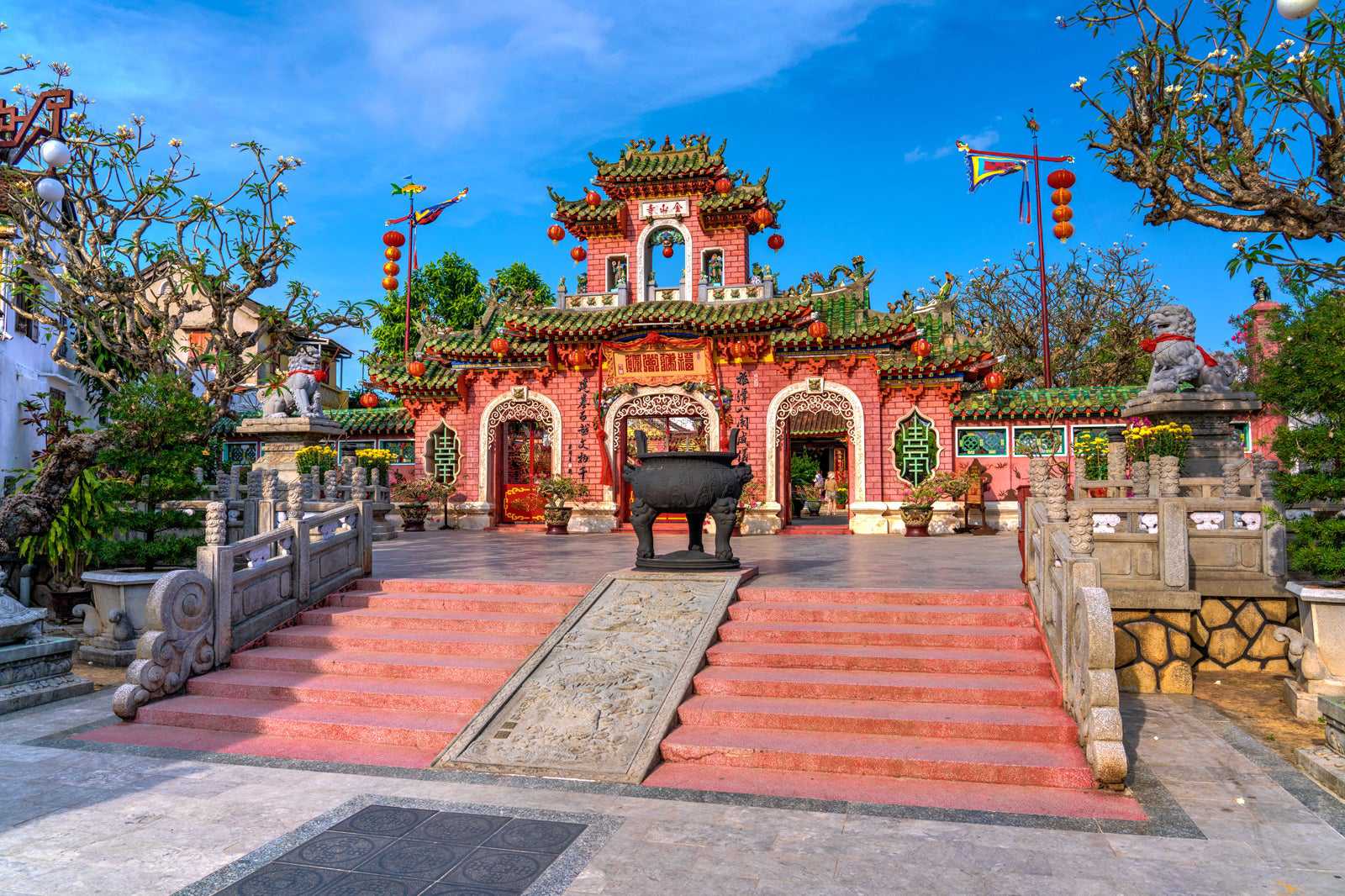
- Historie
- Billeder
The Assembly Hall Of Fujian Chinese is a symbolic icon of Hoi An architecture and Fujian artistry, boasting beautiful statues of Buddhist deities, altars adorned with delicate carvings of dragons, bronze bells drums, and lacquered artwork.
Constructed in 1690, this World Heritage site was utilised by residents from Fujian in China to meet up and socialise while living or visiting Hoi An. The Assembly Hall Of Fujian Chinese is also the home of Jinshang Golden Mountain Temple, which is dedicated to Thien Hau, the goddess of the sea and caretaker of sailors. There is also a fertility shrine where childless couples pray in hopes of conceiving.
Adresse: 46 Tran Phu, Cam Chau, Hoi An, Quang Nam, Vietnam
Åbningstider: Daily from 7 am to 6 pm
Kort - 8
An Bang Beach
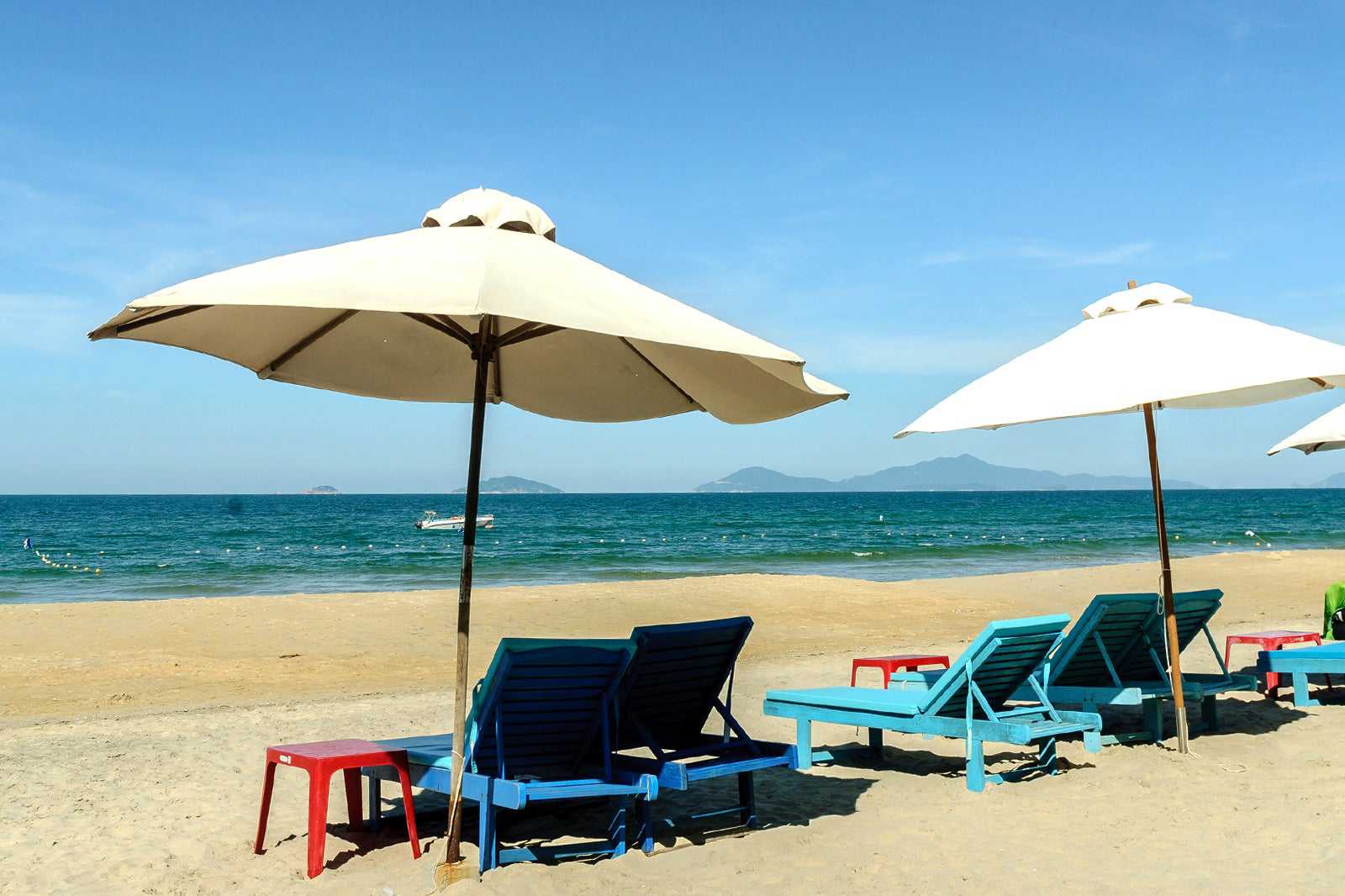
- Par
- Familier
- Billeder
An Bang Beach houses an array of beachfront resorts, seafood restaurants, and hippy bars with stunning views of neighbouring mountains and islets. It’s one of the few stretches of beach in Hoi An that’s relatively unspoiled by development, where you can enjoy activities such as swimming and paddleboarding, or simply relaxing on rented sun loungers.
Surf season is from September until March, and there is plenty of surfing and stand-up paddleboard classes available for inexperienced visitors. Great for soaking up the sun after a day of exploring Hoi An Ancient Town, An Bang Beach is a mere 10-minute drive away.
Adresse: D. Hai Ba Trung, Hoi An, Quang Nam, Vietnam
Kort - 9
Chuc Thanh Pagoda
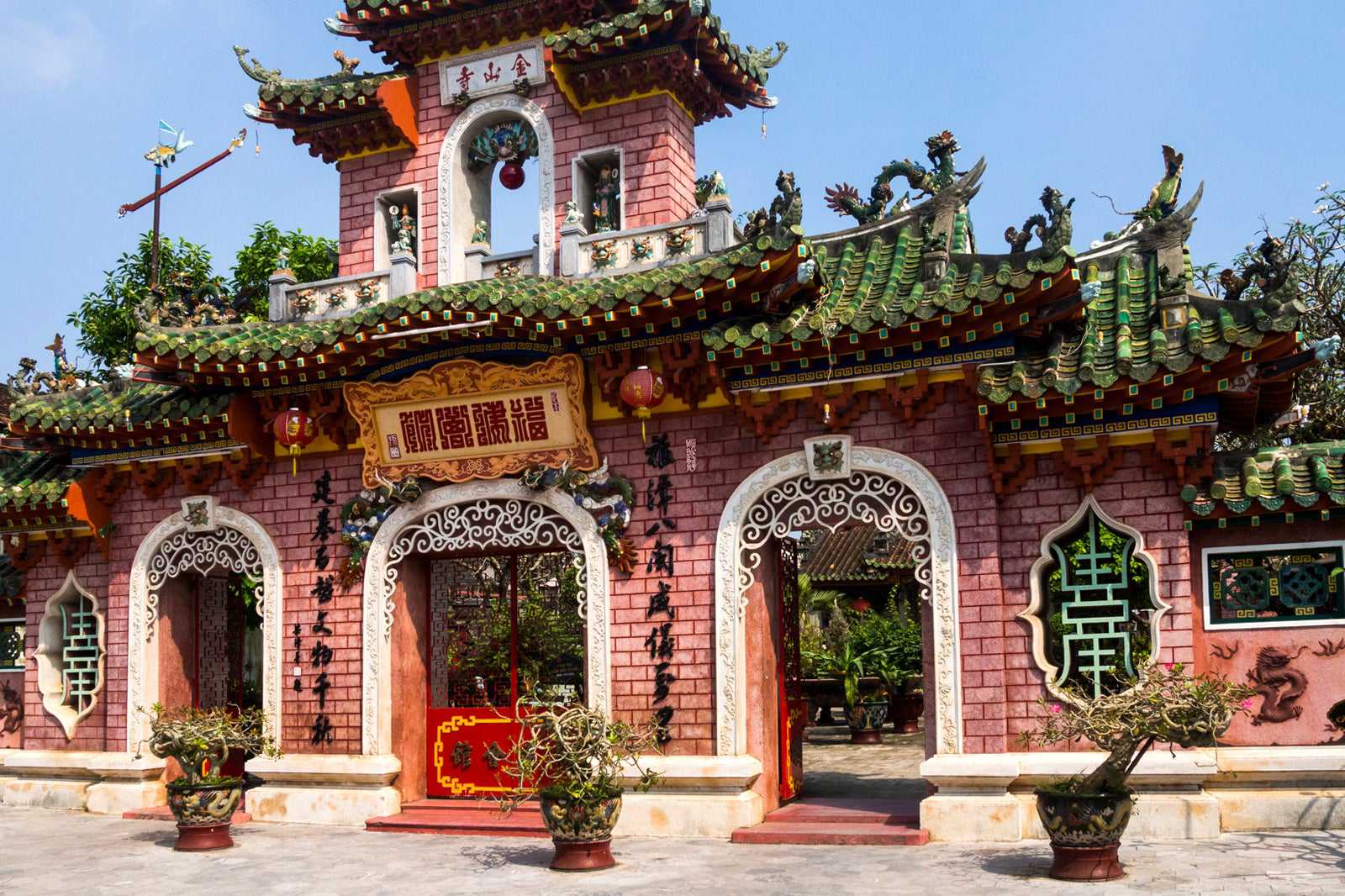
- Historie
- Billeder
Chuc Thanh Pagoda was founded by Monk Minh Hai of China in 1454, making it the oldest Buddhist pagoda in Hoi An. Locally known as Chùa Chúc Thánh, the temple features a mix of Vietnamese and Chinese architectural designs with intricate animal carvings, lacquered pillars, and 16 grave towers of eminent monks. It also houses a marble statue of Guan Yin, the goddess of mercy.
Chuc Thanh Pagoda is regarded as the birthplace of the Thien Tam Te religion, where antique ritual objects such as a 200-year-old stone gong, a carp-shaped wooden gong, and several bells are still in use to this day.
Adresse: Tan An Ward, Hoi An, Quang Nam, Vietnam
Kort - 10
Hoi An Museum of Trade Ceramics
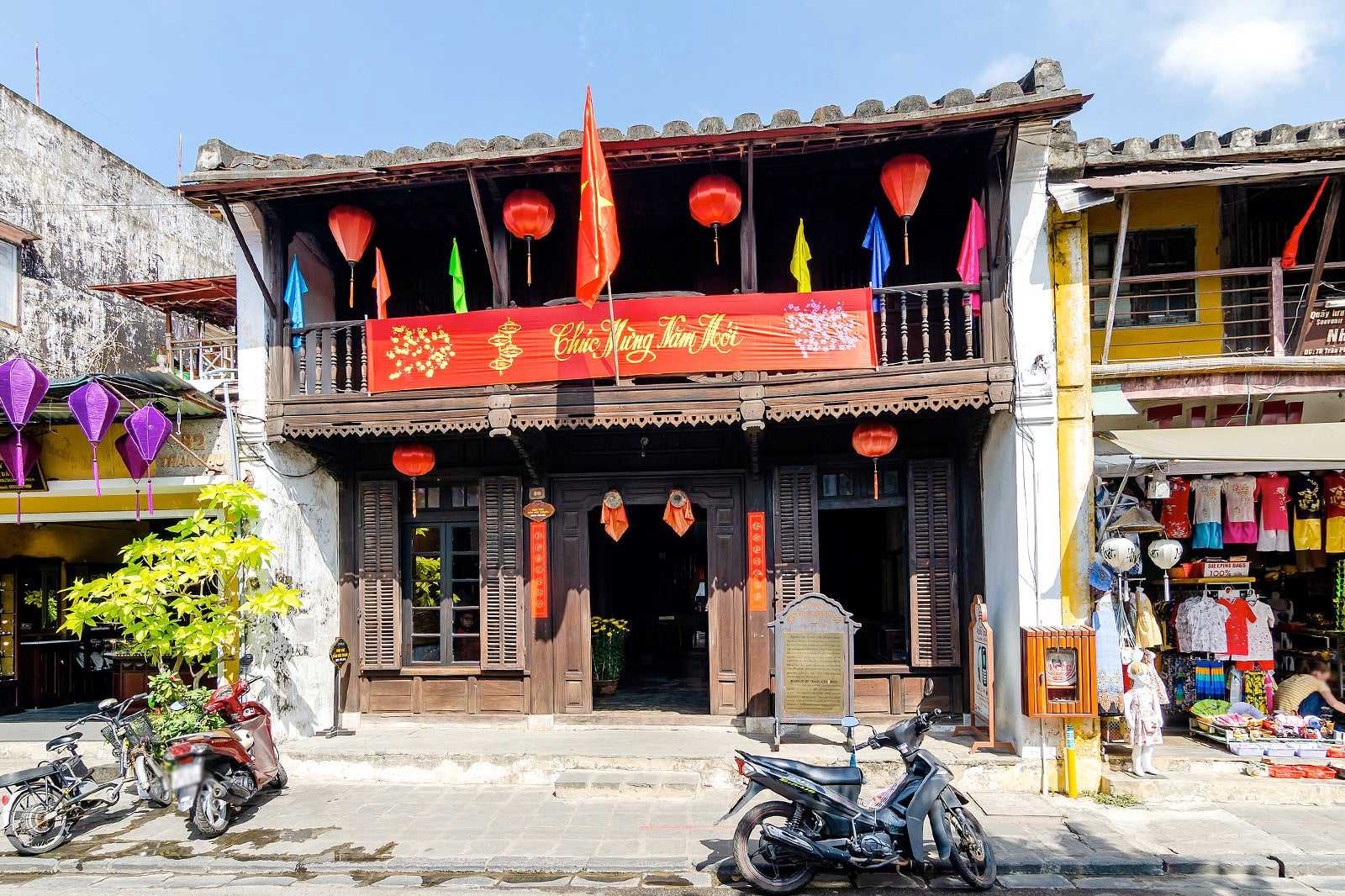
- Historie
- Billeder
The Hoi An Museum of Trade Ceramics is set within a restored timber house along Tran Phu Street, displaying a vast selection of foreign ceramics with detailed descriptions written in English. Offering a cultural insight into the history of Hoi An and foreign relationships with countries such as Japan, China and India, these artefacts mainly date back to between the 8th and 18th centuries.
Entrance is free of charge, and visitors can experience what it’s like to live in a traditional Vietnamese house. Located in Hoi An Ancient Town, Hoi An Museum of Trade Ceramics is just a 5-minute stroll from the iconic Japanese Covered Bridge.
Adresse: 80 Tran Phu, Minh An Ward, Hoi An, Quang Nam, Vietnam
KortBillede taget af Steffen Schmitz (CC BY-SA 4.0) Redigeret
